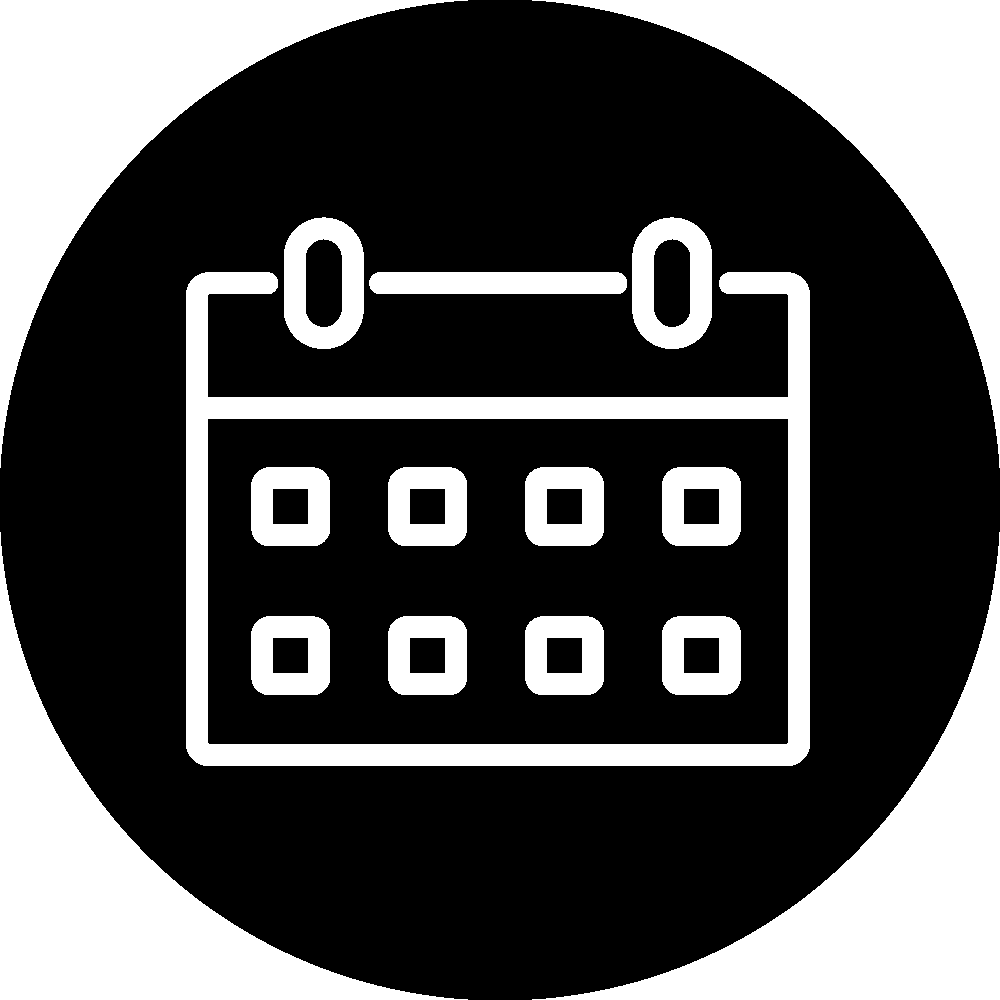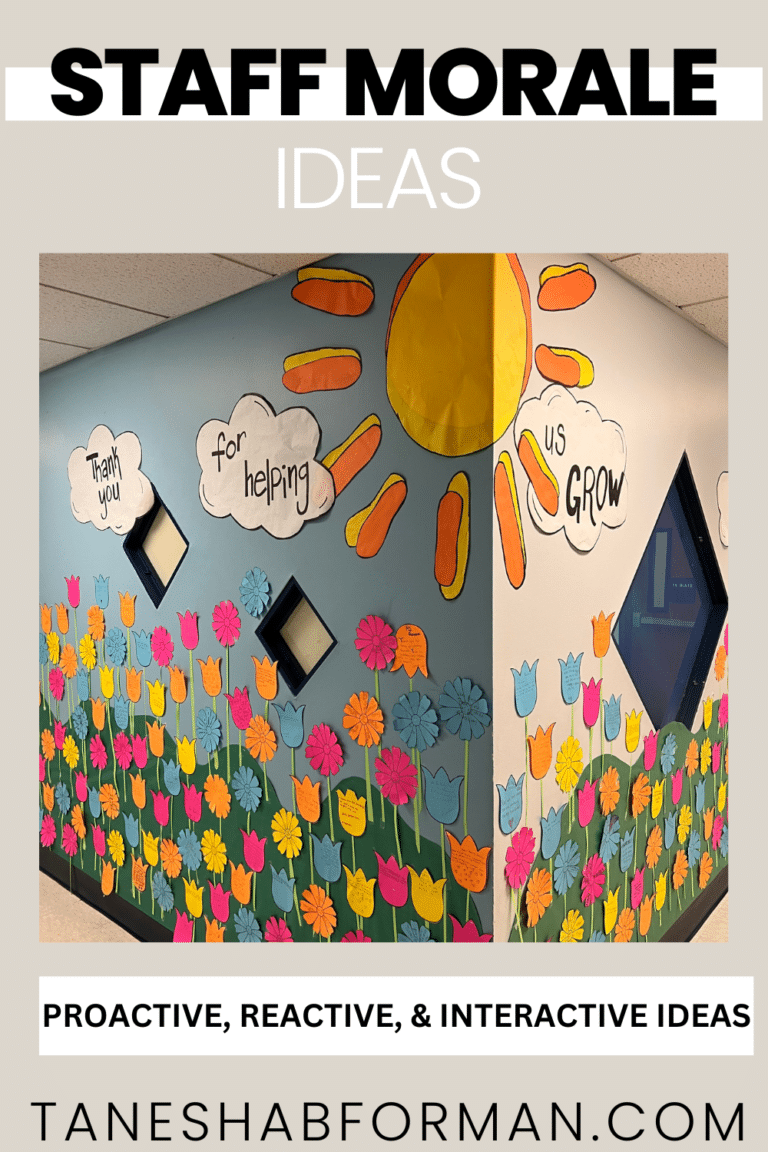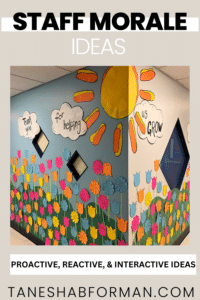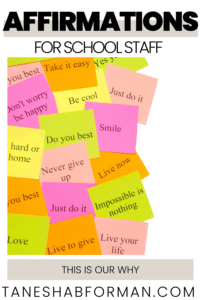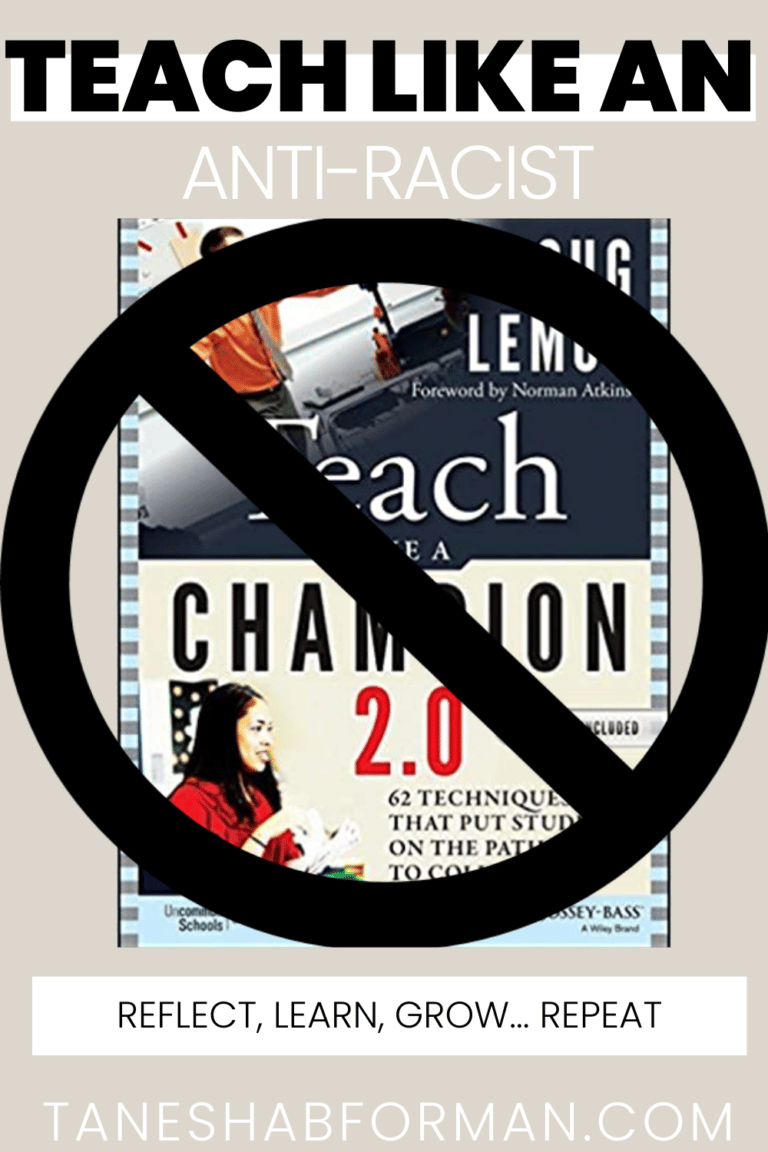
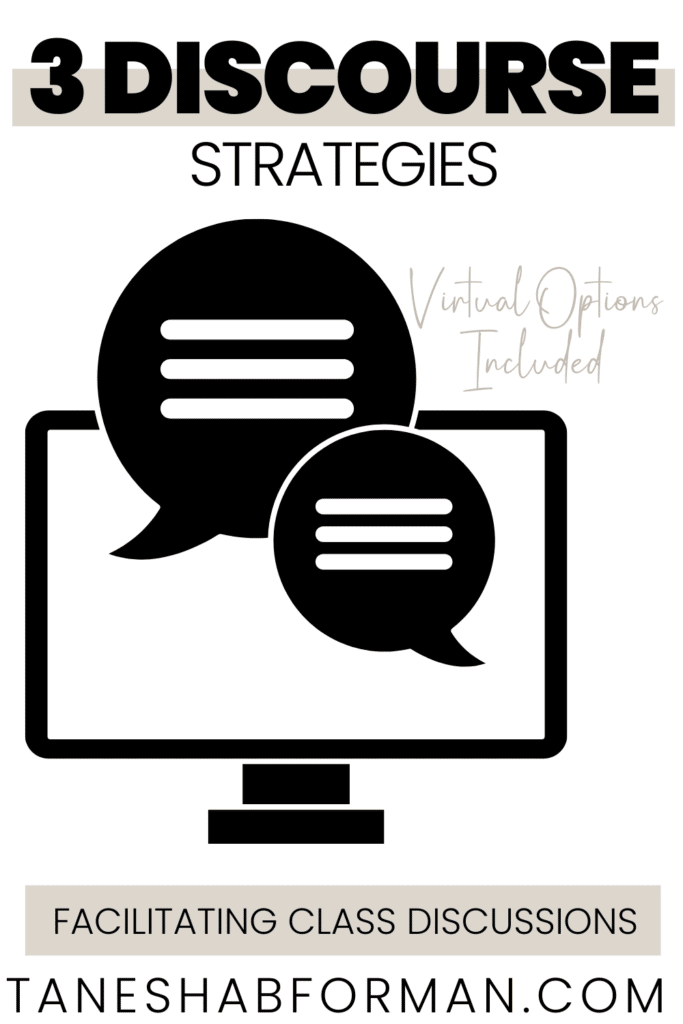
Strategies that Encourage Discourse
If the structure does not permit dialogue the structure must be changed.
Paulo Freire Tweet
Education is about the cycle of learning, revising, challenging, accepting, refuting, and reimagining. Discourse allows students to deepen their understanding of the texts’ ideas and values while strengthening their oral and written argumentation and active listening skills. It enables the education process to move forward because students can share and push their thinking collectively. But how? Prior to starting it’s important to have norms, rules, and habits in place to lay the foundation for strong discussions.
Introducing Discourse: Creating the conditions and habits for discourse to thrive in the classroom takes intentionality. We can’t assume that all students will feel comfortable jumping in and sharing ideas if we haven’t explicitly set them up to be successful. Let’s take a quick look at three considerations to introducing discourse in the classroom.
KEY STRATEGIES
This is something that can and should take time. Learning to critically (and respectfully) respond to peer thinking is an important skill to develop. Many teachers have co-created norms and procedures, which should be leveraged. If not, teachers should attend to creating an environment conducive to risk-taking and pushing ideas. Here is a post about equitable secondary ELA classrooms to get started.
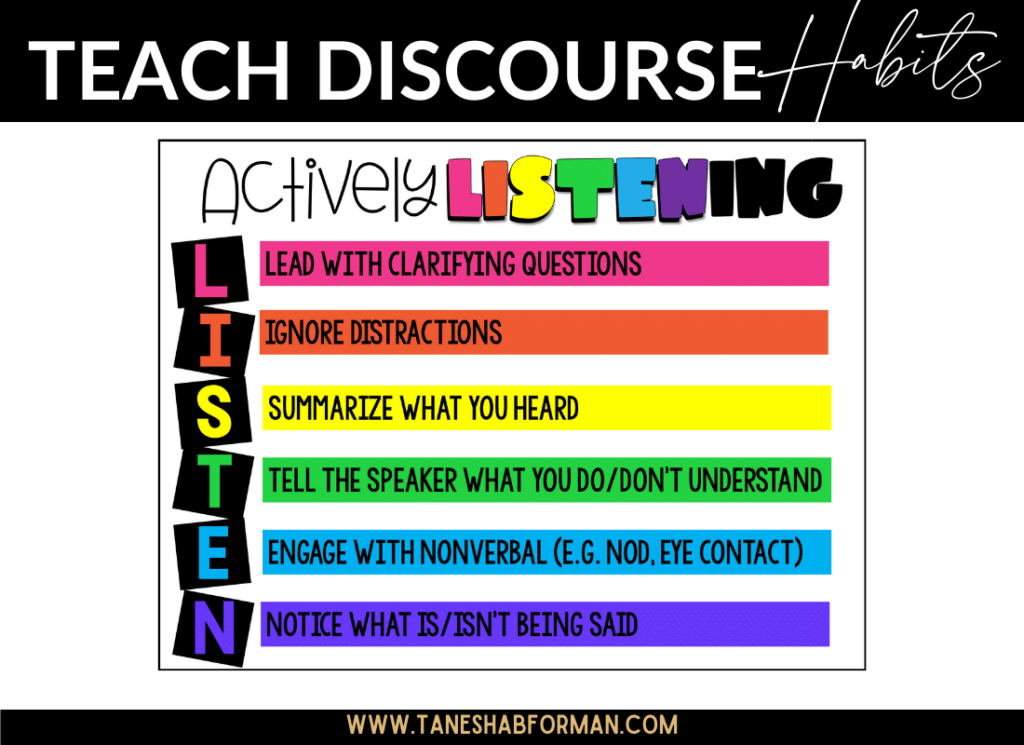
Active Listening – The goal is to have students suspend judgment and attend to what the speaker is saying that they agree with, might want to challenge, or have questions about. We want students to enter with curiosity and a desire to learn. Therefore, the focus is on removing distractions and listening without interrupting the speaker. Take time to develop this muscle with students. A few ideas include:
- Teach what actively listening looks, sounds, and feels like.
- Encourage paraphrasing throughout class
- Model active listening skills for students
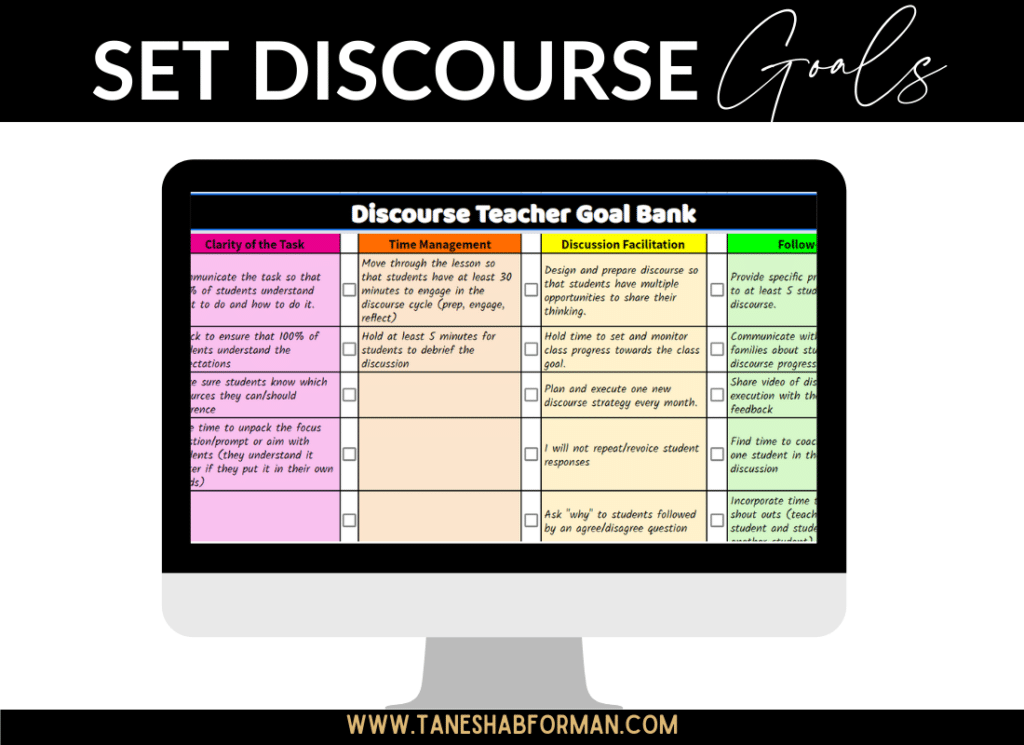
Setting Goals – What are your goals and expectations for the discussion? Classroom discussions should be driven by students to promote ownership and independence. When students takes the reins in the classroom, it decenters the teacher and redistributes power. This takes time and intentionality. I am always striving for this in my classes and something I experienced a range of success with.
One great tool to leverage is goal setting! Goal setting helps us organize our time and efforts towards our long term vision with short-term benchmarks. Goals keep us clear, challenge us to be better, and centered us on a commitment. Here is a bank of teacher, class, and student level goals. Please make a copy and enjoy! The checkmarks are designed to track the goals you’ve introduced or focused on.
Virtual Consideration: It’s great to have one class goal that the teacher can share with students. At the end of the discussion, teachers can have students respond in the chat, with a poll, or to a survey on how they did.
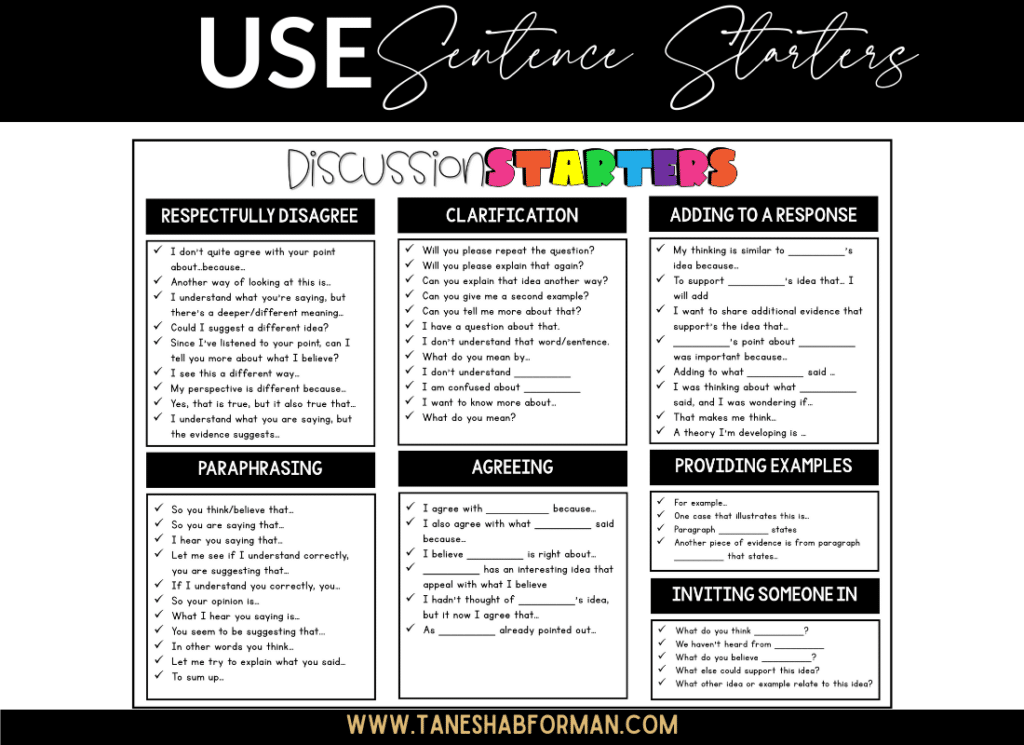
Respectful Disagreement – What should students do if they do not agree with a response? Discussions are a place for students to share their perspectives, interpretations, and beliefs, which means they could light a passionate fire. When individuals are passionate or invested in a topic, it can be difficult to participate in a conversation with divergent thinking. That’s why it’s important to name and teach students on the frontend. Strategies:
- Sentence Starters
- Empathy Lesson Plans
- Discuss Nonverbal Communication
- Co- Create a Classroom Contract

PIN FOR LATER!
JOIN THE COLLECTIVE
Sign up and access the FREE resources to support your Anti-Bias/Anti-Racism journey.

Tanesha B. Forman
I'm a current middle school administrator who loves breaking down complex topics and providing opportunities for educators learn, reflect, practice, and implement methods that foster equity and anti-racism. I believe we win together!
Behind the Blog


Hi, I'm Tanesha.
I’m a current middle school administrator who loves breaking down complex topics and providing opportunities for educators learn, reflect, practice, and implement methods that foster equity and anti-racism. I believe we win together!





